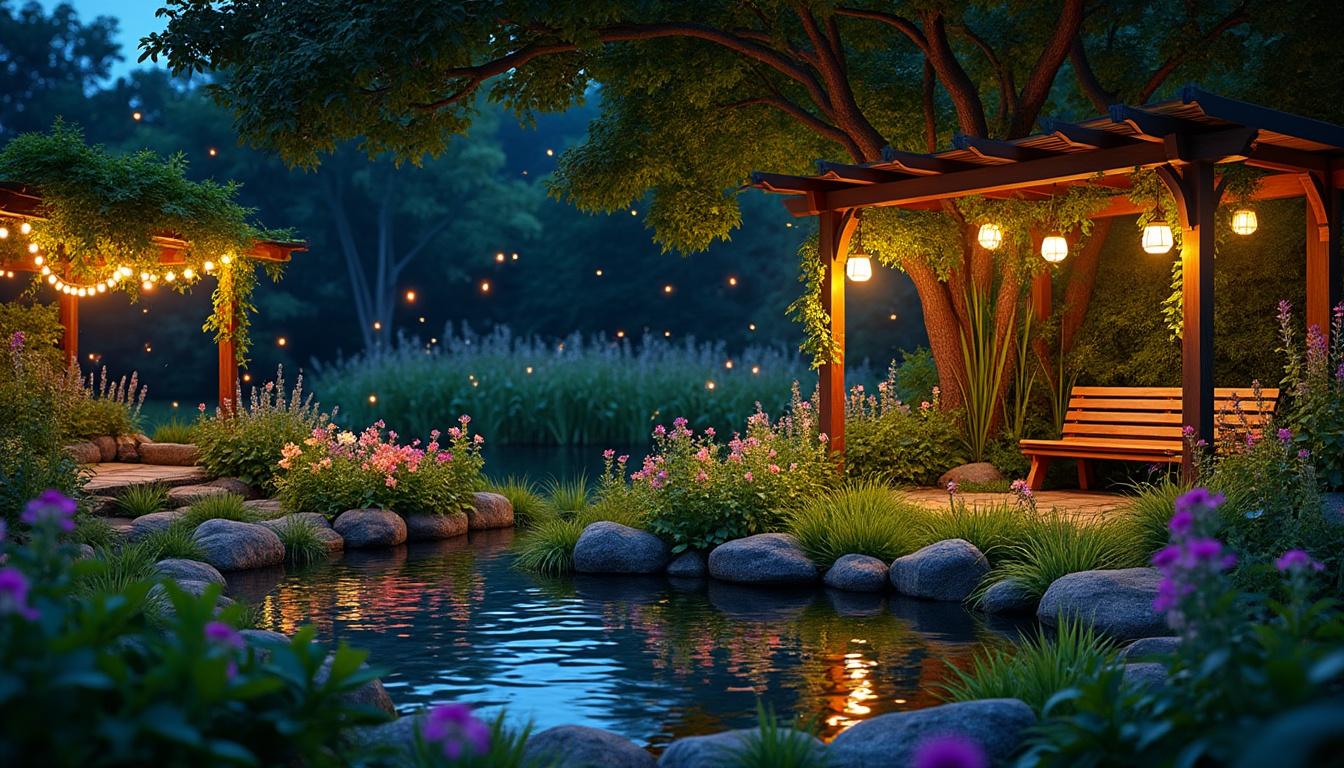Firefly lights have long captivated observers, turning ordinary gardens into captivating twilight gardens filled with nature’s nightlights. As concerns about environmental decline grow, fostering habitats for these bio-bright insects not only enhances outdoor illumination but also promotes ecological health. Simple, practical methods can transform any backyard into a flourishing haven for glow worms, making it possible to light up your garden naturally and sustainably. Discover six straightforward tips designed to increase the presence of these enchanting creatures, bringing a magical Eco-Glow to your garden lumens while supporting biodiversity.
Optimize Your Garden Lumens by Reducing Artificial Light
Fireflies rely heavily on darkness to communicate through their signature glow. Excessive outdoor lighting can disrupt their natural behaviors, hindering mating and navigation. Minimizing light pollution is essential to creating an inviting environment for these delicate insects.
- Replace bright bulbs with low-voltage or solar-powered lights emitting soft, warm hues.
- Install motion sensors to limit lighting only when necessary, helping maintain natural darkness.
- Use shielded fixtures that direct light downward, reducing skyglow and glare.
- Turn off unnecessary lights during key firefly activity periods, typically at dusk and early evening.
| Lighting Strategy | Impact on Firefly Activity | Eco-Friendly Feature |
|---|---|---|
| Low-voltage bulbs | Enhances firefly visibility and mating signals | Reduces energy consumption |
| Motion sensor lights | Decreases constant illumination, mimics natural darkness | Improves energy efficiency |
| Shielded fixtures | Minimizes light scatter, preserves night sky | Prevents excess light pollution |
Encourage Native FloraTwinkle to Support Firefly Habitats
Fireflies depend on specific plants and moist ground conditions for survival. Integrating native vegetation that favors their lifecycle not only beautifies your garden but creates a bio-bright environment conducive to these insects thriving.
- Plant native species such as ferns and wildflowers that retain moisture and offer shelter.
- Create leaf litter piles to provide breeding grounds and food sources.
- Include flowering plants that attract prey for glow worms, aiding the entire ecosystem.
| Native Plant | Benefit for Fireflies | Additional Garden Advantages |
|---|---|---|
| Ferns | Retain humid microhabitats | Enhance soil health |
| Wildflowers | Provide shelter and attract insect prey | Boost pollinator populations |
| Moisture-retaining grasses | Maintain damp ground for larvae | Suppress weeds naturally |
Maintain Moist Environments to Sustain Firefly Larvae
Water availability is crucial as firefly larvae require moist soil to develop and hunt. Supporting damp microhabitats encourages their growth, increasing the likelihood of firefly lights illuminating outdoors during summer nights.
- Use mulch to conserve soil moisture and regulate temperature.
- Install shallow water features such as birdbaths, avoiding chemicals that could harm larvae.
- Water plants strategically during dry periods to maintain adequate ground hydration.
| Moisture Technique | Firefly Benefit | Garden Enhancement |
|---|---|---|
| Mulching | Preserves damp soil | Improves soil nutrients |
| Water features | Creates habitats and drinking spots | Attracts diverse wildlife |
| Targeted watering | Prevents larval desiccation | Promotes healthy plant growth |
Limit Pesticide Use to Protect Fireflies and Garden Biodiversity
Many pesticides are harmful not only to pests but also to beneficial insects like glow worms. Prioritizing natural pest control increases garden lumens by safeguarding these luminous allies.
- Adopt integrated pest management by encouraging predator insects that control pests.
- Use organic fertilizers and treatments to promote healthy soil biology.
- Handpick pests when feasible to minimize chemical application.
| Pest Control Method | Effect on Fireflies | Environmental Impact |
|---|---|---|
| Integrated Pest Management | Maintains healthy firefly populations | Reduces chemical runoff |
| Organic fertilizers | Supports eco-friendly garden ecosystem | Enhances soil fertility |
| Manual pest removal | Directly protects non-target species | Decreases chemical exposure risks |
Create Undisturbed Dark Corners to Serve as Sanctuary Zones
Fireflies thrive in areas less frequented by humans, where their mating signals can be freely exchanged. Designating specific areas as twilight gardens fosters a peaceful refuge promoting eco-glow populations.
- Reserve sections of the garden with tall plants and dense shrubs to serve as undisturbed habitats.
- Limit foot traffic in these zones during peak firefly activity.
- Avoid lawn mowing or disturbance in sanctuary areas during breeding seasons.
| Sanctuary Feature | Benefit to Fireflies | Garden Biodiversity Impact |
|---|---|---|
| Tall vegetation | Provides cover and breeding sites | Supports a variety of fauna |
| Restricted human activity | Reduces disruptions to firefly behavior | Enhances ecological balance |
| Minimal maintenance | Preserves habitat integrity | Encourages natural regrowth |
Install FloraTwinkle and Bio-Bright Decorative Elements
Modern garden technologies and design can complement natural firefly displays. Integrating eco-conscious light elements enhances the garden’s ambience without overwhelming native glow worms.
- Choose solar-powered FloraTwinkle lights that mimic natural firefly flashes.
- Incorporate bio-bright lanterns with dimmers to adjust light intensity.
- Position lights strategically to highlight plants without interfering with insect navigation.
| Decorative Element | Function | Firefly Compatibility |
|---|---|---|
| FloraTwinkle solar lights | Mimic firefly glow and enhance evening ambience | Non-intrusive, adjustable brightness |
| Bio-Bright lanterns | Provide gentle garden illumination | Shielded light source avoids disturbance |
| Motion-free lighting | Prevents startling fireflies | Supports continuous firefly activity |
Frequently Asked Questions About Encouraging Fireflies
- How do fireflies benefit garden ecosystems? Fireflies help control pest populations and indicate healthy environmental conditions, contributing to overall garden lumens.
- Can artificial lights permanently deter fireflies? Yes, constant bright lighting interferes with their mating signals, reducing populations over time.
- Which plants are best for attracting glow worms? Native ferns, wildflowers, and moisture-retaining grasses provide essential habitat and food sources.
- Are pesticides harmful to fireflies? Many pesticides compromise firefly larvae survival; using organic methods protects these crucial insects.
- How can one balance decorative lighting with firefly preservation? Opt for soft, solar-powered lights with adjustable settings, positioned away from core firefly habitats.

